Abstract
This study reviewed a high-risk population of inner-city women with FIGO (International Federation of Gynecologists and Obstetricians) stage Ib cervical cancer diagnosed and treated at a single institution between 1986 and 1993. The patient age at diagnosis averaged 49 years, and most of the patients were black (83%). Squamous carcinomas predominated (75%). Radiotherapy was the most frequent treatment modality (49%), followed by surgery (38%) and combined radiation/surgery (13%). The Kaplan-Meier estimated 4-year survival for all patients completing treatment was 81%. Increased survival was significantly associated with therapy. The Kaplan-Meier estimated survival at 26 months (the time of the last death in radiotherapy patients) was 66% for radiotherapy patients and 100% for those treated with surgery. Radiotherapy patients differed from surgery patients in age, tumor size, and pelvic lymph node status, indicating that treatment selection bias could explain the observed difference in survival. Age, race, histology, and cervical lesion size were not significantly associated with survival.
Full text
PDF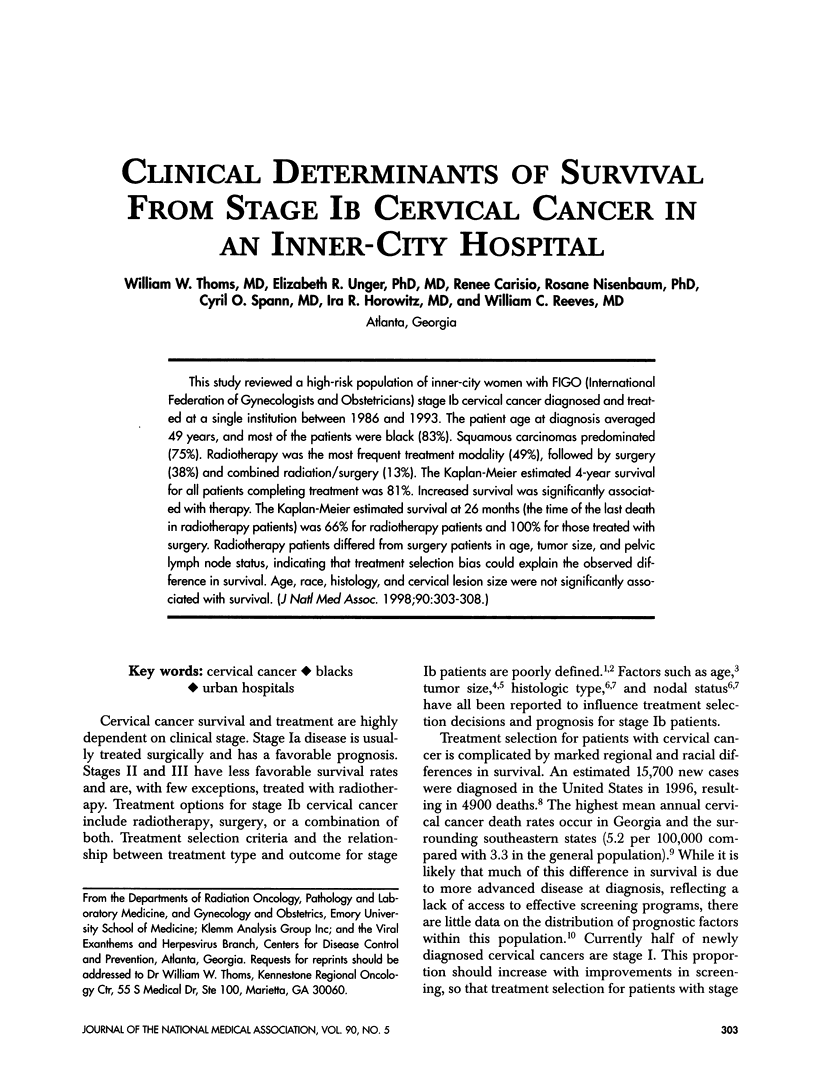
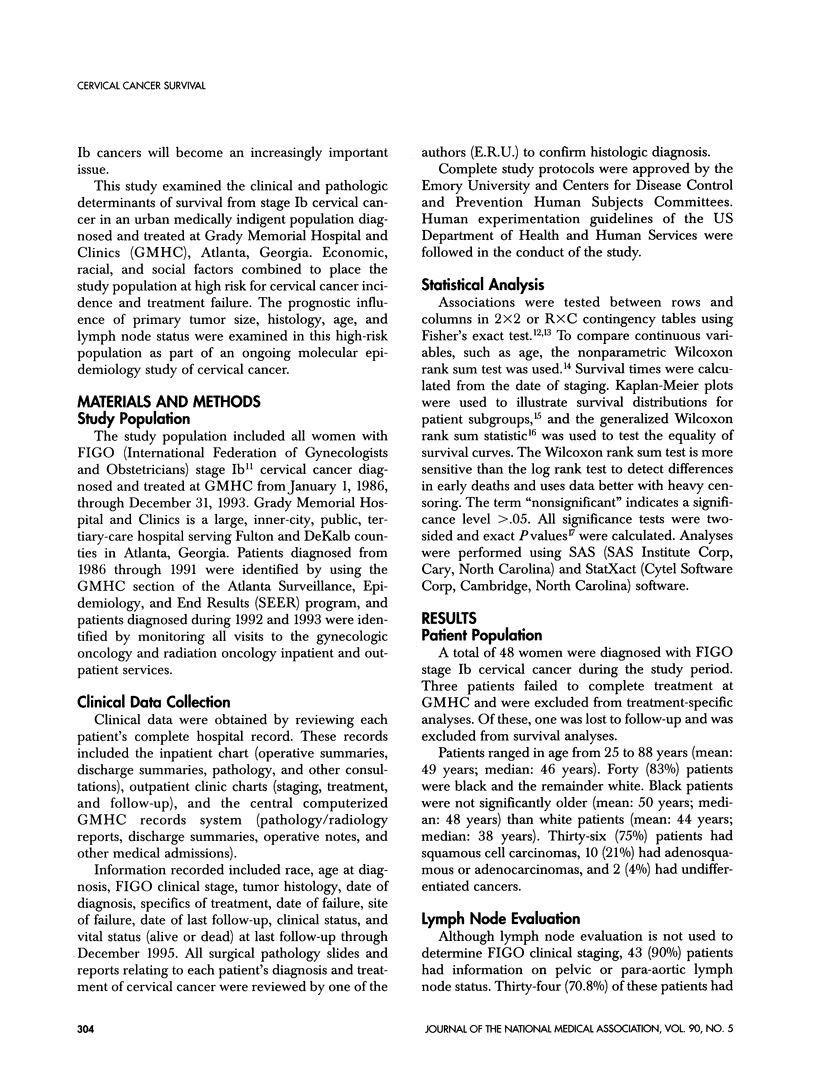

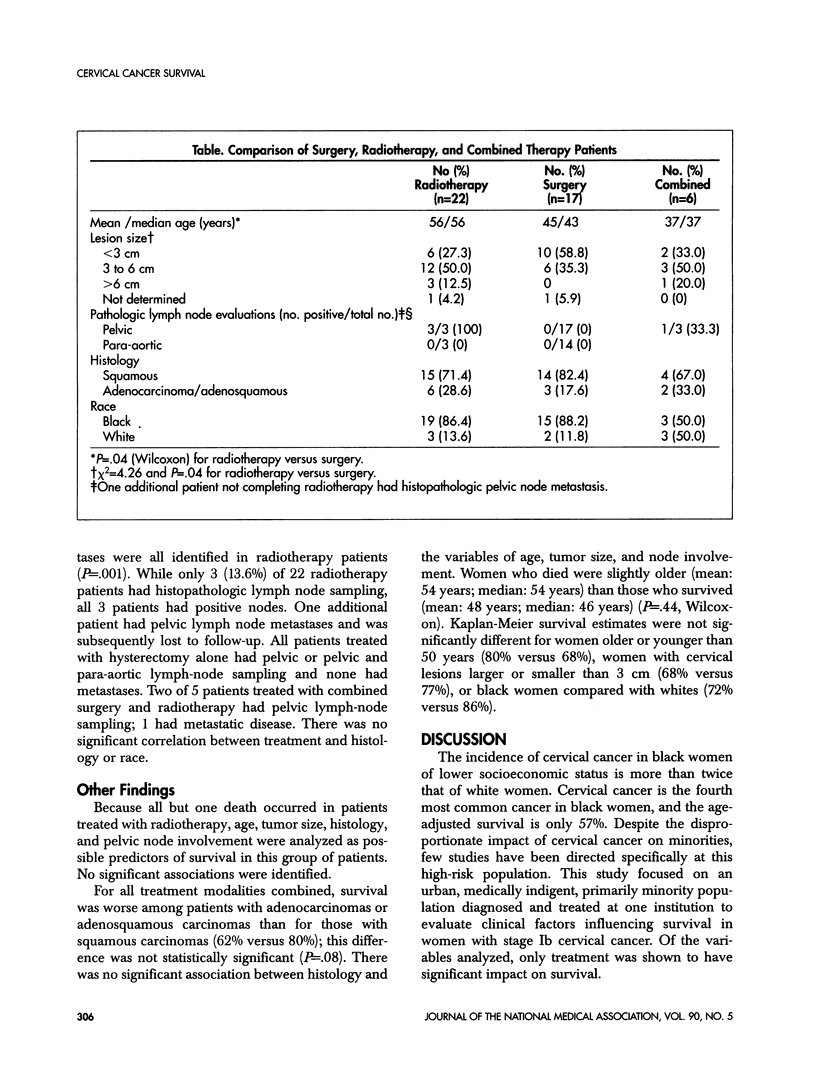
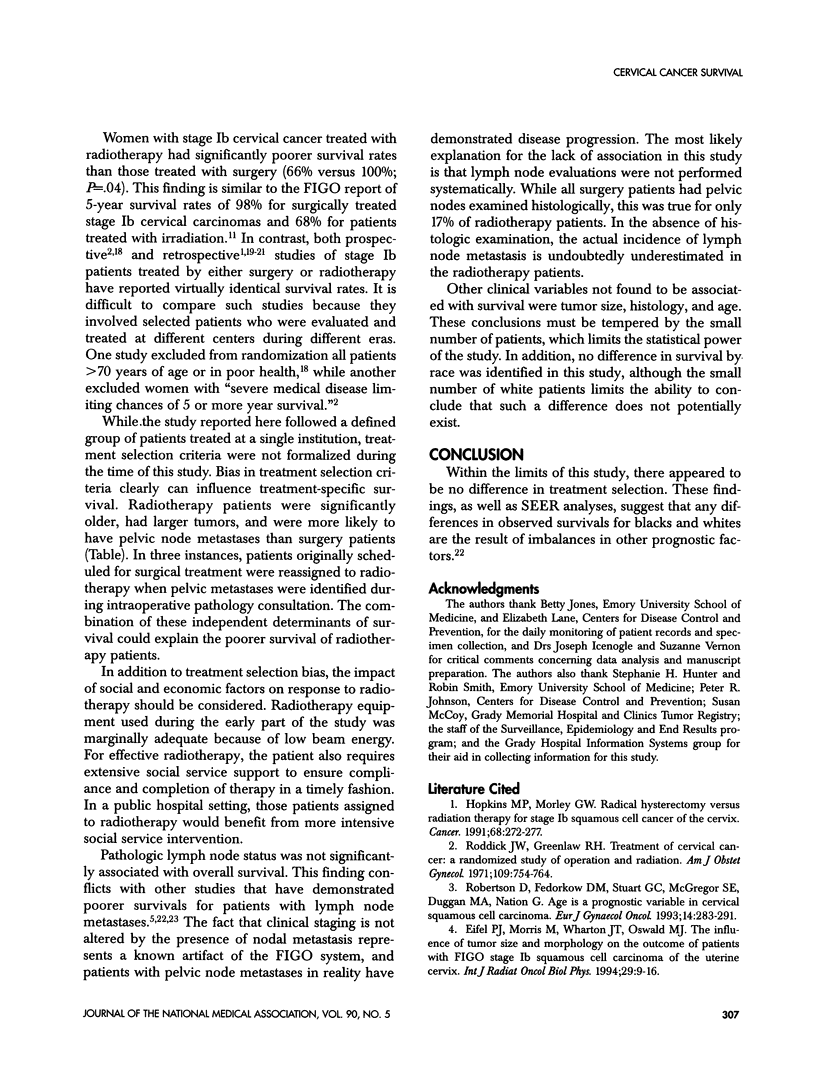
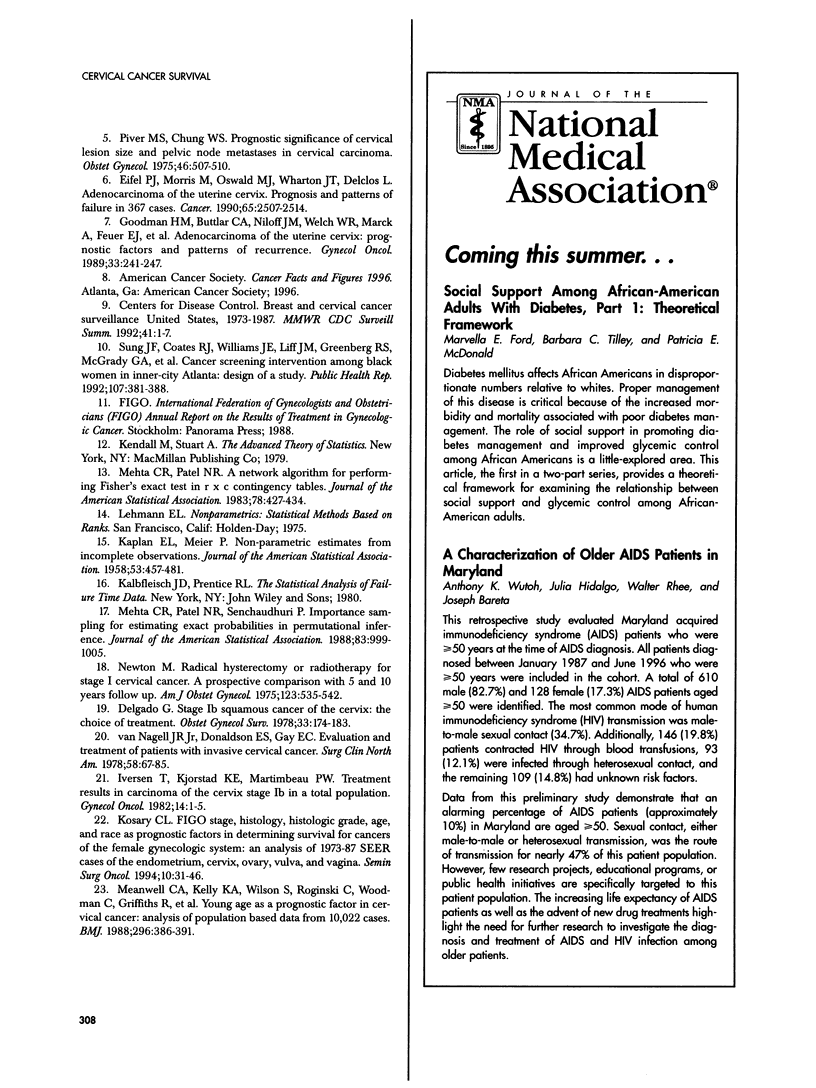
Selected References
These references are in PubMed. This may not be the complete list of references from this article.
- Delgado G. Stage IB squamous cancer of the cervix: the choice of treatment. Obstet Gynecol Surv. 1978 Mar;33(3):174–183. doi: 10.1097/00006254-197803000-00016. [DOI] [PubMed] [Google Scholar]
- Eifel P. J., Morris M., Oswald M. J., Wharton J. T., Delclos L. Adenocarcinoma of the uterine cervix. Prognosis and patterns of failure in 367 cases. Cancer. 1990 Jun 1;65(11):2507–2514. doi: 10.1002/1097-0142(19900601)65:11<2507::aid-cncr2820651120>3.0.co;2-9. [DOI] [PubMed] [Google Scholar]
- Eifel P. J., Morris M., Wharton J. T., Oswald M. J. The influence of tumor size and morphology on the outcome of patients with FIGO stage IB squamous cell carcinoma of the uterine cervix. Int J Radiat Oncol Biol Phys. 1994 Apr 30;29(1):9–16. doi: 10.1016/0360-3016(94)90220-8. [DOI] [PubMed] [Google Scholar]
- Goodman H. M., Buttlar C. A., Niloff J. M., Welch W. R., Marck A., Feuer E. J., Lahman E. A., Jenison E. L., Knapp R. C. Adenocarcinoma of the uterine cervix: prognostic factors and patterns of recurrence. Gynecol Oncol. 1989 May;33(2):241–247. doi: 10.1016/0090-8258(89)90560-x. [DOI] [PubMed] [Google Scholar]
- Hopkins M. P., Morley G. W. Radical hysterectomy versus radiation therapy for stage IB squamous cell cancer of the cervix. Cancer. 1991 Jul 15;68(2):272–277. doi: 10.1002/1097-0142(19910715)68:2<272::aid-cncr2820680210>3.0.co;2-x. [DOI] [PubMed] [Google Scholar]
- Iversen T., Kjørstad K. E., Martimbeau P. W. Treatment results in carcinoma of the cervix stage IB in a total population. Gynecol Oncol. 1982 Aug;14(1):1–5. doi: 10.1016/0090-8258(82)90044-0. [DOI] [PubMed] [Google Scholar]
- Kosary C. L. FIGO stage, histology, histologic grade, age and race as prognostic factors in determining survival for cancers of the female gynecological system: an analysis of 1973-87 SEER cases of cancers of the endometrium, cervix, ovary, vulva, and vagina. Semin Surg Oncol. 1994 Jan-Feb;10(1):31–46. doi: 10.1002/ssu.2980100107. [DOI] [PubMed] [Google Scholar]
- Meanwell C. A., Kelly K. A., Wilson S., Roginski C., Woodman C., Griffiths R., Blackledge G. Young age as a prognostic factor in cervical cancer: analysis of population based data from 10,022 cases. Br Med J (Clin Res Ed) 1988 Feb 6;296(6619):386–391. doi: 10.1136/bmj.296.6619.386. [DOI] [PMC free article] [PubMed] [Google Scholar]
- Newton M. Radical hysterectomy or radiotherapy for stage I cervical cancer. A prospective comparison with 5 and 10 years follow-up. Am J Obstet Gynecol. 1975 Nov 1;123(5):535–542. doi: 10.1016/0002-9378(75)90041-1. [DOI] [PubMed] [Google Scholar]
- Piver M. S., Chung W. S. Prognostic significance of cervical lesion size and pelvic node metastases in cervical carcinoma. Obstet Gynecol. 1975 Nov;46(5):507–510. [PubMed] [Google Scholar]
- Robertson D., Fedorkow D. M., Stuart G. C., McGregor S. E., Duggan M. A., Nation G. Age is prognostic variable in cervical squamous cell carcinoma. Eur J Gynaecol Oncol. 1993;14(4):283–291. [PubMed] [Google Scholar]
- Roddick J. W., Jr, Greenelaw R. H. Treatment of cervical cancer. A randomized study of operation and radiation. Am J Obstet Gynecol. 1971 Mar 1;109(5):754–764. doi: 10.1016/0002-9378(71)90761-7. [DOI] [PubMed] [Google Scholar]
- Sung J. F., Coates R. J., Williams J. E., Liff J. M., Greenberg R. S., McGrady G. A., Avery B. Y., Blumenthal D. S. Cancer screening intervention among black women in inner-city Atlanta--design of a study. Public Health Rep. 1992 Jul-Aug;107(4):381–388. [PMC free article] [PubMed] [Google Scholar]
- van Nagell J. R., Jr, Donaldson E. S., Gay E. C. Evaluation and treatment of patients with invasive cervical cancer. Surg Clin North Am. 1978 Feb;58(1):67–85. doi: 10.1016/s0039-6109(16)41435-0. [DOI] [PubMed] [Google Scholar]


